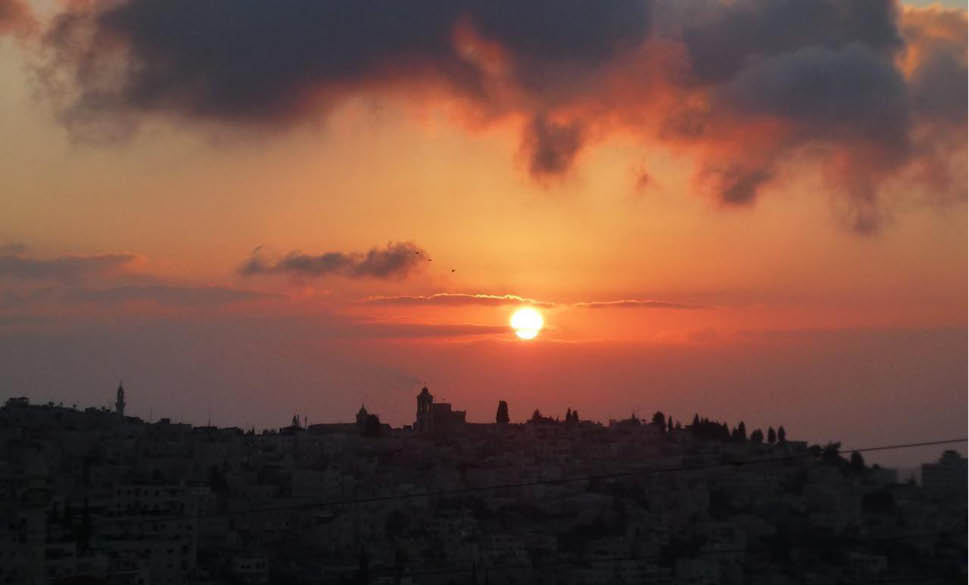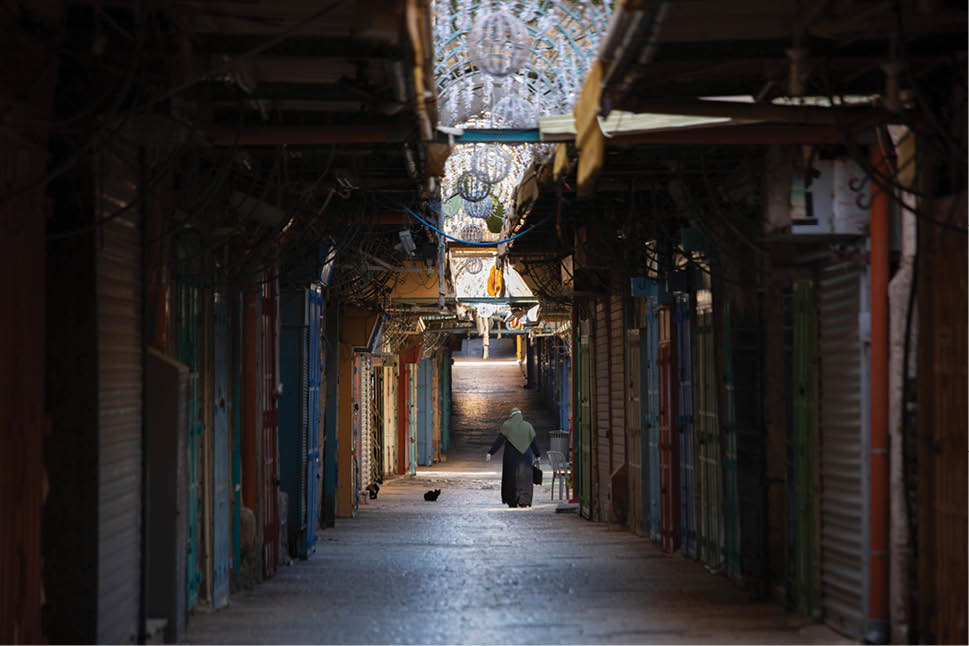Inbound tourism is undoubtedly one of the most important sectors of the Palestinian economy; it constitutes more than 40 percent of the Palestinian national income and plays a dual role. Perhaps the more obvious role is economic, as tourism directly employs a significant percentage of the Palestinian population through hotels, restaurants, transportation, tour guiding, Oriental antique shops, and more. Tourism contributes to the gross domestic product while also intersecting with other sectors such as agriculture, handicrafts, and trade (souvenir shops). The second, slightly subtler role, is political. A strong Palestinian presence on the global tourism map contributes to spreading a message of liberation and increases awareness of the reality in Palestine among the international community.

Undoubtedly, any sector can be exposed to crises of all kinds, whether political or health-related, and the COVID-19 pandemic is no different. When the novel coronavirus appeared in Palestine, it primarily affected the Bethlehem Governorate, a region bustling with tourists year-round. In the interest of public safety, precautionary measures, including a ban on incoming tourism to Palestine, was enacted immediately to slow the spread of the virus – and we are grateful for the timely management of this crisis by the authorities who acted quickly to avoid a situation like that currently unfolding in more-developed countries. However, the emergency measures that were put in place to protect society as a whole have had a paralyzing effect on the entire economy and the tourism sector in particular.
Incoming tourism was at its peak between 2018 and 2019, with hundreds of millions of dollars flowing into Palestine, which in turn had encouraged all stakeholders to make considerable investments in this sector. New hotels were built in Bethlehem, Jericho, Nablus, and Ramallah, adding a total of 1,500 hotel rooms, additional tourist buses were bought, restaurants and large souvenir shops opened, not to mention related businesses that were created in order to fulfill the needs of the increasing numbers of incoming tourists. The large amount of income generated in 2018 and 2019 also led to an increase in all types of other small related investments in all sectors, including housing, agriculture, and trade.
The average tourist or pilgrim who stays seven nights in the Holy Land spends US$ 1,043, distributed as follows (in US$):
– hotel accommodation: 500 (48%)
– bus + guide: 150 (14%)
– shopping: 145 (14%)
– food 100 (10%)
– miscellaneous: 148 (14%)
In 2019, 450,000 tourists visiting Palestine through Palestinian tour operators brought in US$ 469,350,000 in total gross revenues. They came mainly from markets in Europe (especially Germany, Italy, and France), Britain, the United States, Indonesia, and the Philippines. In smaller numbers, visitors came also from other regions of the world, such as Latin America and China. They spent around US$ 230 million in Palestine directly (around 50 percent) and the rest in East Jerusalem and Israel.
Due to the SARS-CoV-2 outbreak, this trend will certainly not continue during 2020. The collapse of the Palestinian tourism sector in early March 2020 was marked by losses of tens of millions of dollars that affected all tourism facilities. It is difficult to speculate on the full economic, social, and political consequences of the pandemic, but we have already seen massive layoffs within tourism facilities. I fear the next steps in the event of a continued escalation of the crisis.

This crisis will undoubtedly lead to higher prices for airline tickets, which will result in a reduced number of travelers. Even after the spread of the virus begins to slow (or recede), affected countries will need a period of at least two to six months to regroup before tourism may be allowed to resume, albeit in a reduced capacity. By that time, the effects of the reduced numbers of travelers may already have led to bankruptcy declarations of tour operators, the conversion of hotels to residential apartments or offices, the transition of tourist guides into other fields, and the downsizing of tourist transport companies.
These consequences of COVID-19 are not unique to Palestine – economies across the globe are facing high levels of unemployment and crippled markets – and the international community must prepare for a potential return of the virus for years to come. However, the likelihood of future outbreaks and the general downturn of the global economy do not exempt the Palestinian Authority (PA) from having to provide practical and realistic solutions to all sectors of the Palestinian economy. The PA’s immediate focus should be to prevent the collapse of those industries, among them the tourism sector, in particular, that will eventually lead the recovery of our economy. Action needs to be swift and ongoing, without waiting until the pandemic recedes.
We thus call on the Palestinian Authority to design and implement an effective relief plan that should consist of a tourism fund of US$ 50 million to support all Palestinian tourism stakeholders and keep them alive until tourists start to return. Furthermore, we need an extensive and real marketing plan to be implemented very soon, in preparation for the day after. And finally, public relations-related activities must start now all over the world to protect us from losing millions of potential tourists in Palestine – and, as a result, our livelihood as well – starting in the summer of 2021.


